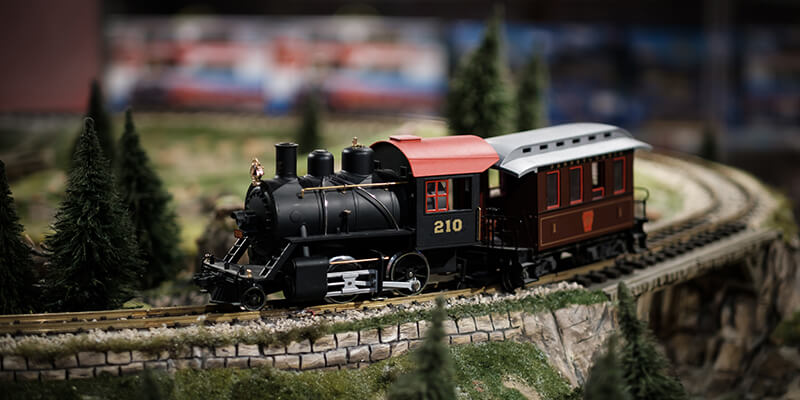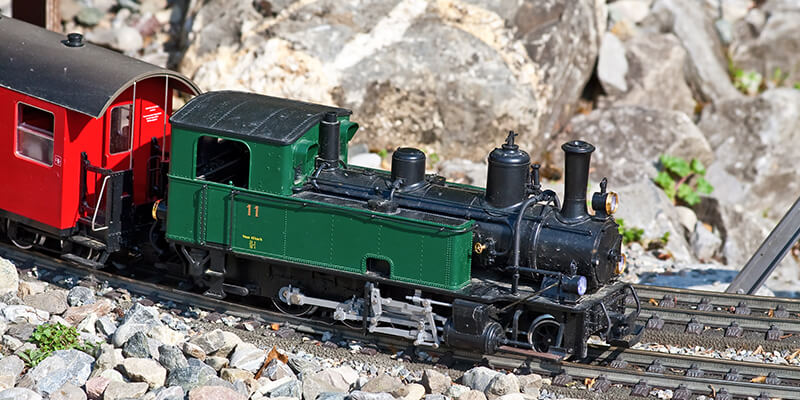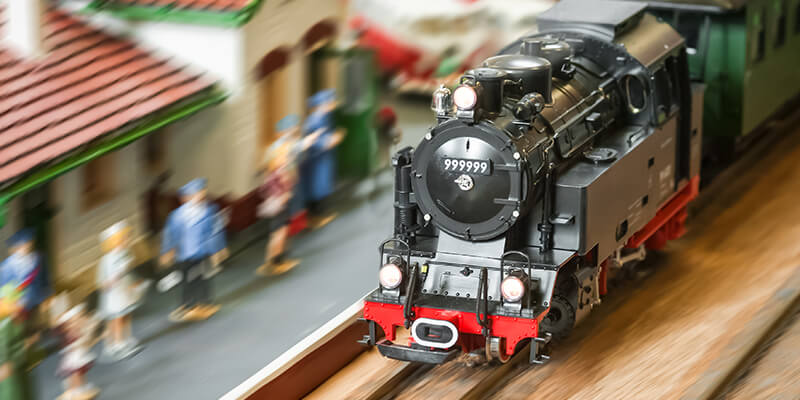Whether you’re a model train enthusiast and hoping to give a new lease of life to your treasured collection, or alternatively, are experimenting with modelling as a new hobby, it is imperative to follow the adequate steps required to maximise your results.
While in the past, the most popular method of painting model locomotives was to carefully apply colour by hand, the process can be somewhat tedious and time-consuming. Spray painting, on the other hand, is a quick and easy, yet highly effective alternative. Throughout this article, we will be guiding you through each step required to seamlessly spray paint even the most delicate of model locomotives.
Spray Painting Model Locomotives
With the process of spray painting continuing to grow in popularity, it is now easier than ever to entirely transform even your most prized possessions safely and effectively. With a generous collection of colour variations available ranging from matte or gloss finishes, particularly when opting for RAL colour aerosols, your final spray painting outcome can be tailored to you. With this in mind, before beginning any form of spray painting, it is imperative to spend time understanding what options are available to you.
As mentioned above, RAL aerosols are often the ‘go-to’ spray paint as there are over 200 different colours available, but this doesn’t necessarily mean that these are the only effective options. British Standard aerosols are also a strong contender when painting model trains. If you’re feeling a little overwhelmed by the different spray paints available and hoping for some advice, the team at DC Paint Solutions would be more than happy to point you in the right direction. We recognise that for many train modellers refreshing an antique set, it is vital to use the perfect colour. A bespoke colour matching service is also available for those hoping to purchase a particular shade.
1. Workspace Preparation
Similarly to any other paint type, spray paint can be incredibly dangerous if misused, which means that ensuring that your workspace is fully prepared is of utmost importance.
If you are hoping to spray inside, we highly recommend assembling and effectively using a spraying booth. Spraying booths do not need to be professionally purchased and can be made using DIY methods at a low price. Family Handyman has a super easy-to-follow video tutorial on how to make your own spraying booth to use at home. Always ensure that the spraying booth is placed in a well-ventilated area.
Alternatively, if you are less keen on building a spraying booth, spray painting can be completed outside. If you are spraying in your garden, don’t forget to lay tarpaulin or an old bed sheet over your spraying area to avoid the paint from spreading onto the grass or flooring.
Regardless of where you are spraying, you must always wear a face mask for your own protection. Inhaling spray paint fumes can have a detrimental impact on your health, running the risk of throat irritation, headaches and nausea – just to name a few. Face masks can be picked up for less than £4 from Protective Masks Direct.

2. Preparing Parts
All model parts should be thoroughly washed before painting to remove any finger grease and to release agents used during the modelling process. Dust can be removed using a dry, soft-haired brush and any stubborn grime can quickly be shifted through a mild solution of soapy water. The Spruce Crafts has put together an incredibly handy article on how to successfully clean model trains.
If you are opting to spray paint as part of the modelling process, we always recommend applying colour to each element individually before fitting together. Attempting to paint once assembled can prove to be incredibly tricky and tedious, even more so if glue has been used as it creates a non-adhesive surface.
Regardless of the item-type that you are spray painting, a high-quality primer must always be used to guarantee a successful outcome. There are a number of primer aerosol spray paints available which are ideal for not only adequately preparing the surface but also practising the art of spraying. Primers are excellent at covering any slight imperfections that may be visible on parts, such as scratches occurred during the modelling process. They will help to achieve a smooth, even canvas to apply your colour.
3. Spray Painting
Once you have prepared both your model train parts and workspace, we suggest quickly ensuring that your paint can is spraying evenly before delving straight into applying colour to parts. To do so, grab a scrap piece of paper or plastic and spray directly onto the surface to ensure that paint is coming out of the nozzle correctly. Always ensure that you spray any items 10 inches away to guarantee an even coat.
Unlike when using conventional painting methods, seamless spray painting cannot be achieved through applying a single thick coat. The process must be completed in stages, allowing plenty of drying time between. Failing to allow the paint to thoroughly dry or opting to spray a single thick layer will run the risk of cracking, bubbling or blistering of the colour. By using a thin coat method, the paint can completely dry before the next application; you will also find that the outcome will be considerably smoother and if required, any mishaps can be rectified between layers.
Spray paints often differ in drying time, so always ensure that you have taken a quick look at the instructions to familiarise yourself with how long the drying process is likely to take. Don’t forget to avoid handling the parks as much as possible to ensure that the colour can set without any stubborn finger marks.

4. Finishing Touches
If you are thinking about applying any lettering, you should apply a clear gloss finish to the patch; this will provide a better surface for the decals to adhere to. Once decals have been carefully applied, you would most definitely benefit from a second layer of clear gloss to seal the lettering in place and disguise any edges. Taking time to add a finishing touch of gloss will prolong the life of your train modelling.
Successfully Spray Model Locomotives!
Ensuring that you spend time during the initial stages to adequately prepare all surfaces through cleaning and priming is imperative in prolonging the colouring of parts. All spraying must be completed in a well-ventilated area, whether this may be outside or inside in, for example, a garage with plenty of open windows.
We hope that you found our guide to spray painting model locomotives helpful, if so, why not share on social media?





